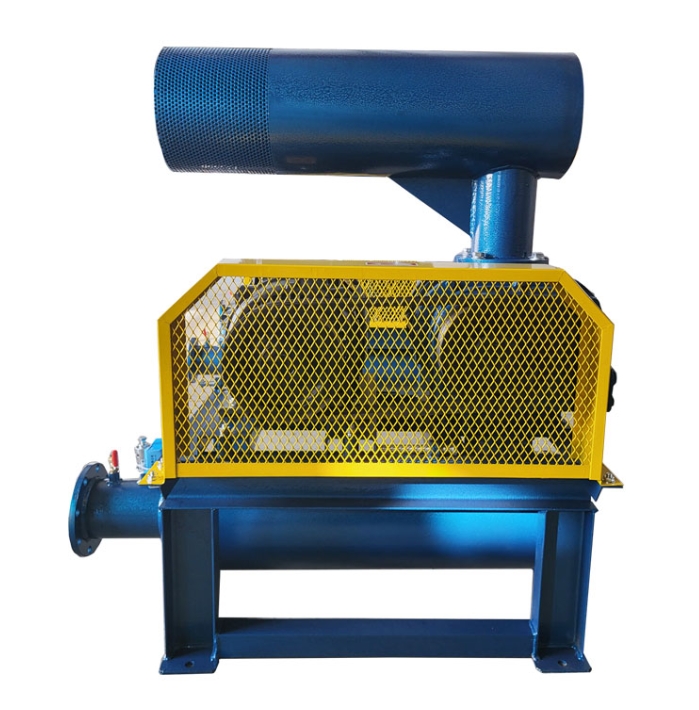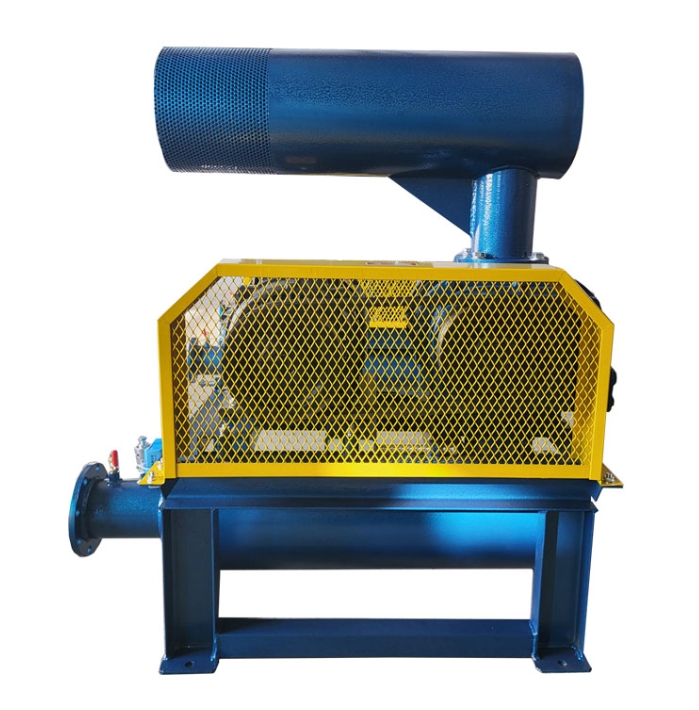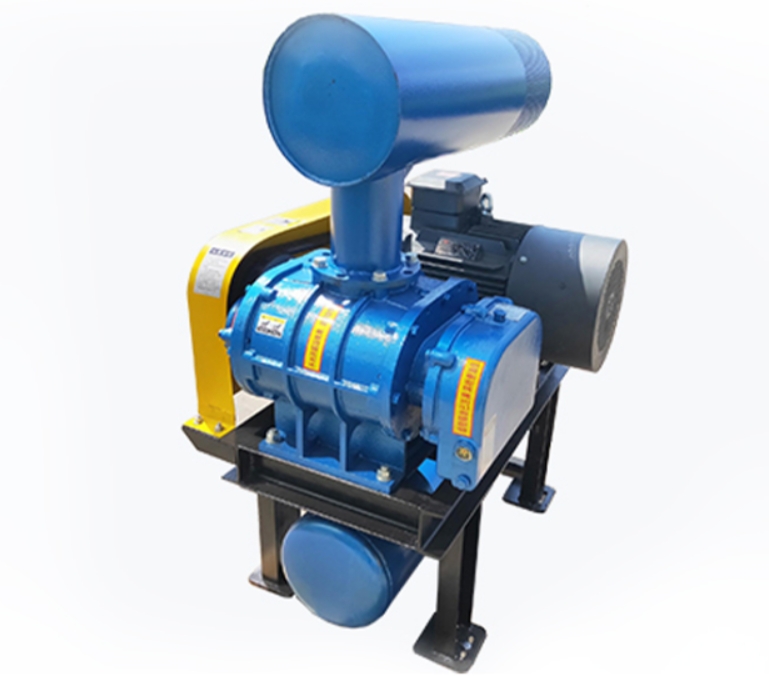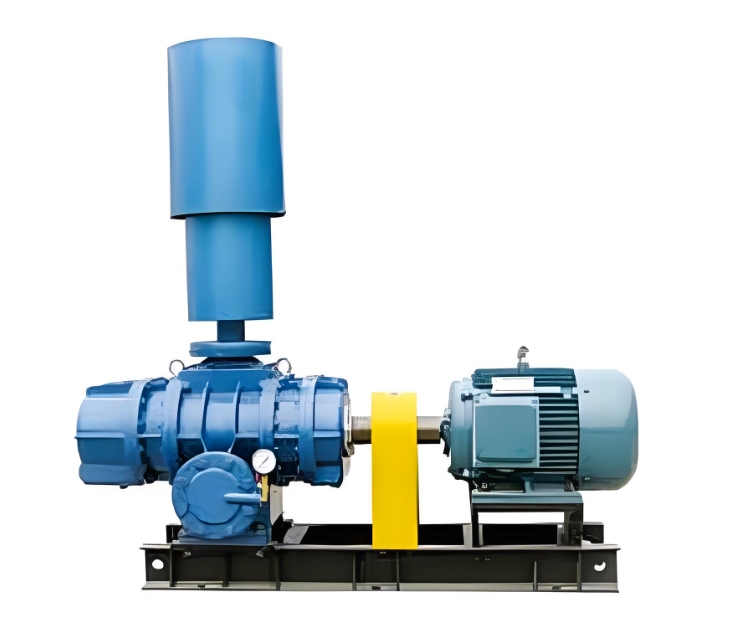Although Roots blowers are widely used, their inherent defects also limit their use in certain scenarios. The following is a detailed analysis of the main drawbacks and technical limitations of Roots blowers:
---

**1、 Efficiency deficiency**
1. * * High energy consumption**
-The mechanical efficiency is only 50-70, far lower than that of centrifugal fans (above 85)
-The energy consumption increases sharply under high-pressure conditions (>80kPa), which is 20-30% higher than that of screw fans
*Example: Processing 100m3/min of air at a pressure of 98kPa consumes approximately 132kW of power (centrifugal fan only requires 98kW)*
2. * * No internal compression design**
-Pressure dependent system back pressure, with a high proportion of useless work
-Additional pressure relief valve is required to increase energy loss
---
**2、 Noise and vibration issues**
1. * * High frequency pulse noise**
-The typical noise of a two blade rotor is 105-115dB (A), and even with a muffler, it is still ≥ 85dB (A)
-Three blade rotor can reduce to 90-100dB (A), but still requires soundproof room (increasing cost)
2. Significant low-frequency vibration**
-The vibration value of rotor meshing frequency often reaches 4.5-6.3mm/s (ISO 10816-3 standard critical value)
-Special shock-absorbing foundation is required, otherwise it will affect the sealing of the pipeline
---
**3、 Pressure limit**
|* * Fan type * * | * * Single stage pressure upper limit * * | * * Achieve higher pressure solution * *|
|--------------|------------------|---------------------------------|
|Roots blower | 98kPa | Double stage series connection (cost ↑ 30, efficiency ↓ 15)|
|Screw fan | 400kPa | can be achieved with a single machine|
|Centrifugal fan | 300kPa | Multi stage series connection|
---
**4、 Maintain pain points**
1. * * Rotor clearance sensitivity**
-Wear exceeding 0.5mm will result in a 20% decrease in efficiency
-Adjustment requires professional equipment (laser alignment instrument), resulting in significant downtime losses
2. * * Synchronous gear life**
-After continuous operation for 20000 to 30000 hours, it must be replaced (costing approximately 15% of the entire machine)
3. * * Multiple sudden malfunctions**
-The proportion of sudden failures such as belt breakage and bearing jamming is greater than 60 (compared to screw fans)
---
**5、 Applicable media restrictions**
1. * * Avoid viscous media**
-When transporting gases containing tar and resin, the rotor is prone to sticking and getting stuck
*Case: A chemical plant transports styrene containing gas, which needs to be dismantled and cleaned within 3 months*
2. * * Limited dust tolerance**
-Although wear-resistant treatment can be done, particles with hardness greater than Mohs 6 still cause rapid wear
-Comparison: Screw fans can handle gases containing trace amounts of quartz sand
---
**6、 Economic weakness**
|* * Cost item * * | Roots blower | Screw blower (comparison)|
|------------------|----------------------|-----------------------|
|Initial procurement cost | 1 (baseline) | 1.8-2.5 times|
|3-year maintenance cost | 25-35 of equipment price | 15-20|
|Energy consumption cost (annual) | 100000 yuan (example) | 70000 yuan (same operating conditions)|
---
**7、 Alternative Proposal**
1. * * High pressure scenario * *: Select screw fan (efficiency ↑ 20, maintenance amount ↓ 50)
2. * * Clean gas * *: Use multi-stage centrifugal fans (noise ↓ 15dB, energy consumption ↓ 30)
3. Corrosive medium: Magnetic levitation centrifugal fan (no mechanical contact, life increased by 3 times)
---
**Summary: 7 major flaws of Roots blower**
1. Low energy efficiency, especially under high pressure conditions
2. High cost of noise and vibration control
3. The increase in pressure requires sacrificing efficiency
4. Maintaining high professional requirements
5. Poor adaptability of the medium
6. The comprehensive usage cost is not advantageous
7. High rate of sudden failures
**Suggested selection principle: Only in working conditions that require constant flow, medium and low pressure, and dust resistance (such as sewage aeration and pneumatic ash conveying), Roots blowers should be preferred. For other scenarios, it is recommended to evaluate alternative solutions.





